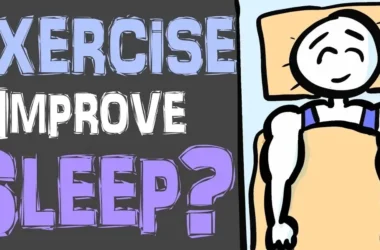Temporomandibular Joint (TMJ) disorders affect the jaw joint and surrounding muscles, causing pain and dysfunction.
This guide will delve into the symptoms, causes, and treatment options for TMJ disorders, helping you manage and alleviate discomfort.
What is a TMJ Disorder?
The temporomandibular joint acts as a sliding hinge, connecting your jawbone to your skull. TMJ disorders, often referred to as TMD, can cause pain in your jaw joint and the muscles controlling jaw movement.
This condition can impact one or both sides of your face and is prevalent among adults aged 20-40, with a higher incidence in women.
Common Symptoms of TMJ Disorders
Temporomandibular Joint (TMJ) disorders encompass a variety of symptoms that primarily affect the jaw, but they can also have widespread effects on the head, neck, and ears. Here are the common symptoms associated with TMJ disorders:
Jaw Pain and Tenderness
Pain or tenderness in the jaw is one of the most common symptoms. This pain can be constant or occur during activities that involve the jaw, such as chewing, speaking, or yawning (MD Health) (Quay Health).
Clicking or Popping Sounds
Many individuals with TMJ disorders experience clicking, popping, or grating sounds when they open or close their mouths. These sounds are often accompanied by discomfort but not always (Quay Health).
Lockjaw (Limited Jaw Movement)
TMJ disorders can cause a condition known as lockjaw, where the jaw becomes stuck in an open or closed position. This can make it difficult to open the mouth fully (Quay Health) (Relive Health).
Ear Pain and Tinnitus
Pain in and around the ears is common, and some people may experience tinnitus (ringing in the ears). These symptoms can occur because the temporomandibular joint is located near the ear canal (DeFatta Health).
Headaches and Migraines
Frequent headaches and migraines are often reported by those suffering from TMJ disorders. The pain can be similar to tension headaches and is usually linked to the jaw muscles and joints (MD Health).
Facial Pain
Pain can extend to the face, neck, and shoulders. This widespread pain is due to the interconnected nature of the muscles and nerves in these areas (Quay Health) (DeFatta Health).
Difficulty Chewing
Chewing can become painful, and individuals might experience an uneven bite or feel that their upper and lower teeth don’t fit together properly (MD Health) (Quay Health).
Swelling on the Side of the Face
Some people may notice swelling on one or both sides of their face, which is associated with inflammation or irritation in the TMJ area (MD Health).
Additional Symptoms
- Toothaches: Pain and sensitivity in the teeth that are not linked to dental issues can be a symptom of TMJ disorders.
- Neck and Shoulder Pain: Tension in the jaw muscles can spread, causing discomfort in the neck and shoulders.
- Dizziness: Some individuals report dizziness or a feeling of unsteadiness, which may be related to TMJ disorders.
If you are experiencing any of these symptoms, it is essential to seek medical advice for a proper diagnosis and treatment plan. Early intervention can help manage and alleviate the discomfort associated with TMJ disorders.
For further reading and detailed information on TMJ disorders, you can visit reputable health websites or consult with a healthcare provider.
Causes of TMJ Disorders
Temporomandibular Joint (TMJ) disorders can result from a variety of factors. Often, the exact cause is difficult to determine, as it can stem from multiple contributing factors. Here are some common causes of TMJ disorders:
Teeth Grinding (Bruxism)
Teeth grinding, also known as bruxism, is a significant contributor to TMJ disorders. This condition, often exacerbated by stress, involves clenching or grinding the teeth, which puts immense pressure on the temporomandibular joint, leading to pain and dysfunction (Relive Health).
Jaw Injury
Any trauma or injury to the jaw, such as a direct blow or whiplash, can damage the temporomandibular joint. This damage can cause misalignment or inflammation, resulting in TMJ disorder symptoms (Quay Health).
Arthritis
Arthritis, particularly osteoarthritis and rheumatoid arthritis, can affect the TMJ. These inflammatory conditions can degrade the cartilage in the joint, leading to pain, stiffness, and decreased mobility (Quay Health).
Misaligned Bite (Malocclusion)
A misaligned bite, where the teeth do not fit together correctly, can place undue stress on the TMJ. Dental issues like missing teeth, crooked teeth, or an improper bite can contribute to the development of TMJ disorders (Quay Health).
Poor Posture
Poor posture, especially when the head is often held forward or down, can strain the muscles of the neck and jaw. This strain can transfer to the TMJ, leading to discomfort and dysfunction over time (Quay Health).
Stress and Anxiety
High levels of stress and anxiety can lead to habits such as jaw clenching or teeth grinding, which in turn place additional pressure on the TMJ. Managing stress can sometimes alleviate TMJ symptoms (Quay Health) (Relive Health).
Connective Tissue Diseases
Conditions affecting connective tissues, such as Ehlers-Danlos syndrome, can impact the stability and function of the temporomandibular joint.
Also Read: Understanding and Preventing Staph Infections: Essential Guide to MSSA
These diseases can lead to increased joint laxity, making the TMJ more susceptible to disorders (Quay Health).
Other Contributing Factors
- Genetics: Family history can play a role in the likelihood of developing TMJ disorders.
- Hormonal Factors: Some studies suggest that hormonal fluctuations, particularly in women, might influence the development of TMJ disorders.
- Dental Work: Extensive dental procedures or orthodontic treatments can sometimes lead to changes in bite and jaw alignment, contributing to TMJ disorders.
Understanding the causes of TMJ disorders is crucial for effective diagnosis and treatment. If you suspect you have a TMJ disorder, consult with a healthcare professional for a thorough examination and appropriate treatment plan.
Conclusion
TMJ disorders can significantly impact daily life, but with the right diagnosis and treatment, symptoms can be managed effectively.
By understanding the causes and embracing appropriate treatment strategies, you can reduce pain and improve jaw function, leading to a better quality of life.
For more information on TMJ disorders, consult your healthcare provider or visit reputable health websites.




